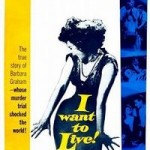Housing Discrimination in New Berlin?
The current controversy regarding “affordable housing” in New Berlin illustrates the weakness of federal law regarding housing discrimination based on socioeconomic class.
By way of backdrop, New Berlin is a suburb southwest of Milwaukee on the eastern edge of Waukesha County. When a developer came forward with plans for low-cost rental housing in New Berlin, some members of the City’s largely white, bourgeois population expressed opposition. New Berlin’s Plan Commission then hastily nixed the affordable housing idea. This led in turn to an investigation by the United States Department of Justice’s Civil Rights Division.
I anticipate the investigation will not lead to legal action. No information has emerged suggesting New Berlin’s actions were explicitly aimed at racial or ethnic minorities, and this is significant when federal law is applied. The federal Fair Housing Act, for example, was enacted with race and ethnicity rather than socioeconomic class in mind. In addition, while race is surely a viable basis for an equal protection argument under the Fourteenth Amendment, socioeconomic classifications are not “suspect” and therefore can be justified with a conventional claim of rationality.
Has New Berlin engaged in housing discrimination by excluding affordable housing and the poor and working-class people who might rent such housing? It appears that the dominant ideology as re-packaged by the federal law offers little help when facing exclusionary practices geared to socioeconomic status. Under the law, the United States has no class.


